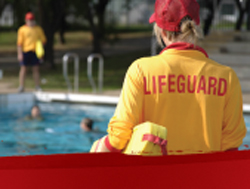Royal Life Saving exports Aussie knowledge to Vietnam


We all know the sad state of child pool drownings in Australia, and are aware of the variety of measures that are being taken to combat it.
Last year (2009/2010) 56 children under 18 years of age drowned in Australian waterways, beaches, dams and pools.
While this is a tragic figure, bear in mind that over the same period in Asia, more than 350,000 children under 18 drowned. (Just to repeat in case you think that’s a mistake – 350,000). That’s nearly 1000 every day.
In Vietnam alone, 11,000 Vietnamese children drown every year – about 32 every day. Sadly, Vietnam’s statistics are by no means the highest. In Bangladesh the statistics are even more staggering. More than 16,000 children drown every year – close to 50 infants, kids and teenagers every single day – the same number we lose every year in Australia.
The reasons for this are both simple and complex. Australia is a country with a strong water safety culture borne from backyard and community pools to beaches, rivers and lakes, and reinforced by Olympians, surfers, lifesavers and iconic imagery of Australiana. Our children learn to swim early – swimming and water safety is incorporated into school curricula and basic lifesaving skills form a prerequisite for other sport and leisure activities such as sailing, canoeing and camping.
Much of the Asian population fits within a development frameset: vulnerable people earning less than a dollar a day and eking out what existence they can. Recreation, organised sport and money for children’s swimming lessons—or facilities for them—are far from reality.
Yet Asian countries are crisscrossed by rivers, lakes, canals, irrigation ditches, rice paddies and ponds. And they flood. Villages are surrounded by water, and it is here, usually only metres from the home, that the majority of children drown.
Until recently, the figures have been little more than guesswork. Health statistics come from hospitals and health centres: who presents with what symptoms, how many survive, and how many die. The thousands of children who drown in a village pond or a nearby rice paddy never see a hospital. Consequently, their deaths go unreported and the issue of child drowning never surfaces.
By choosing to host the World Conference on Drowning Prevention 2011 in Vietnam, the Royal Life Saving Society Australia will draw worldwide attention to what must be considered an epidemic and what must be addressed as a public health issue. It has moved far beyond one of water safety alone.
The World Conference on Drowning Prevention 2011 will be held in the beachside city of Da Nang, Vietnam from 10-13 May 2011 – a tourist city experiencing continual growth in pools and aquatic ventures.
The World Conference on Drowning Prevention 2011 will make a valuable addition for those already attending the SPLASH! Asia Expo in Singapore. For more information go to www.worldconferenceondrowningprevention.org.



